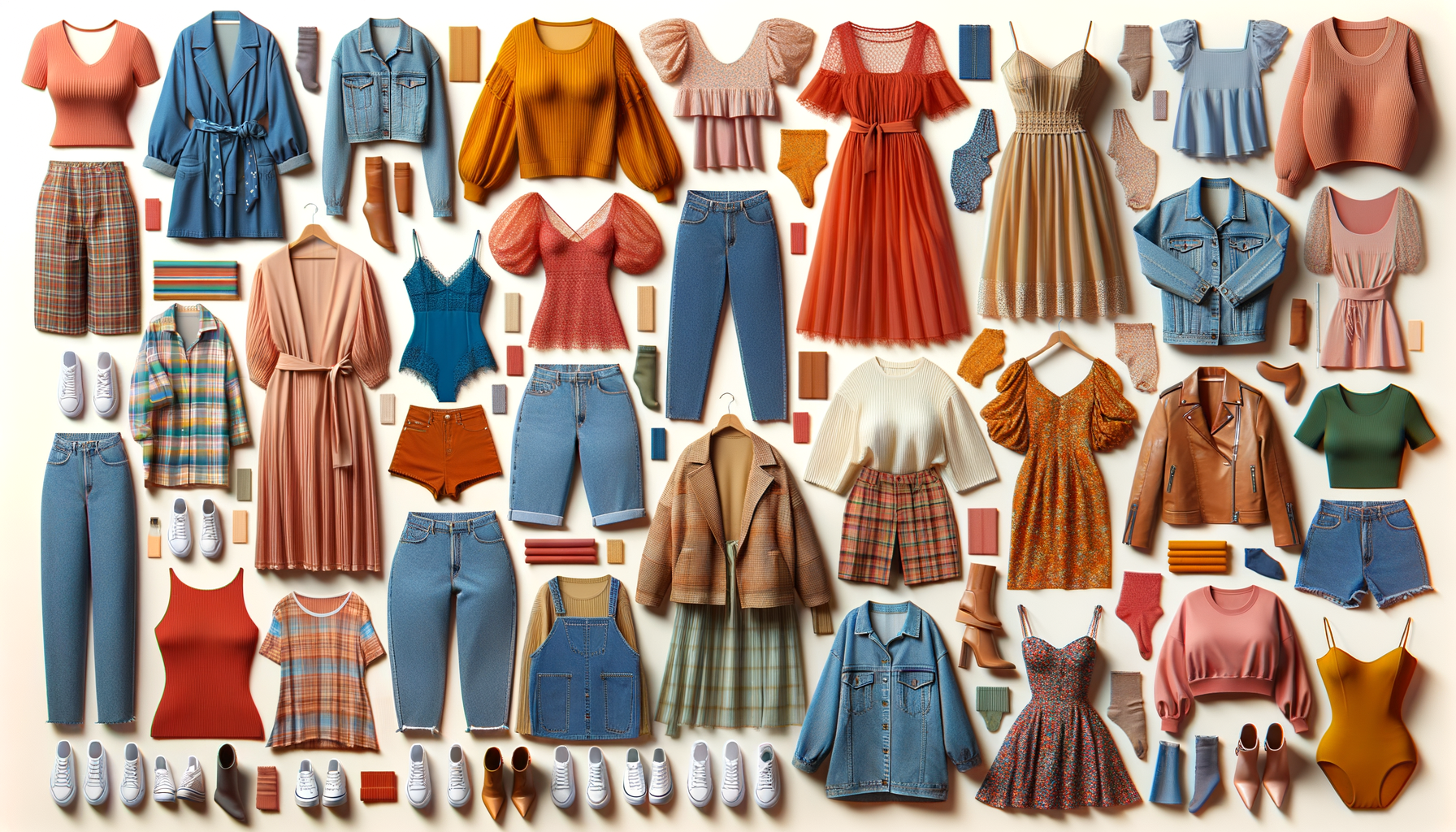The Evolution of Plus Size Fashion
The fashion industry has undergone a significant transformation over the past few decades, particularly in the realm of plus size clothing. Historically, fashion catered primarily to smaller sizes, often neglecting the diverse body types that make up the consumer base. However, as society has become more inclusive and body-positive, the demand for plus size fashion has surged, prompting designers and retailers to expand their offerings. This shift has not only been fueled by consumer demand but also by the rise of social media influencers and activists advocating for representation and diversity in fashion. The evolution of plus size fashion is a testament to the industry’s growing recognition of the need for inclusivity and the celebration of all body types.
Retailers and designers are now realizing the importance of catering to a broader audience. Many brands have embraced this change by launching plus size lines or expanding their existing collections to include larger sizes. This has led to a more diverse range of styles, from casual wear to formal attire, ensuring that individuals of all shapes and sizes can find clothing that suits their taste and fits comfortably. The introduction of plus size models in mainstream fashion shows and advertising campaigns has further solidified the presence of plus size fashion in the industry, challenging traditional beauty standards and promoting a more inclusive view of beauty.
Understanding Plus Size Sizing
Sizing in the plus size clothing industry can often be confusing and inconsistent, leading to frustration among consumers. Unlike standard sizing, which tends to follow a more uniform scale, plus size clothing often varies significantly from one brand to another. This lack of standardization can make shopping for plus size clothing challenging, as customers may find themselves fitting into different sizes depending on the brand or even the style of clothing. Understanding the nuances of plus size sizing is crucial for consumers to make informed purchasing decisions and find clothing that fits well.
One key aspect of plus size sizing is the difference between “straight sizes” and “plus sizes.” Straight sizes typically range from 0 to 12, while plus sizes start at 14 and can go up to 40 or beyond. However, the cut and fit of plus size clothing can vary widely, with some brands offering more generous cuts and others opting for a more tailored fit. To navigate these differences, many consumers rely on size charts provided by retailers, which offer measurements for bust, waist, and hips to help determine the best fit. Additionally, customer reviews and feedback can be invaluable resources for understanding how a particular garment may fit.
Styles and Trends in Plus Size Clothing
The world of plus size fashion is as diverse and dynamic as any other segment of the industry, with a wide range of styles and trends to explore. From vibrant prints and bold colors to minimalist designs and classic silhouettes, plus size clothing offers something for everyone. As the industry continues to evolve, designers are increasingly focusing on creating stylish and trendy options that cater to the unique preferences and needs of plus size consumers.
One popular trend in plus size fashion is the emphasis on body positivity and self-expression. Many brands are embracing this movement by offering clothing that celebrates individuality and encourages consumers to express themselves through their wardrobe choices. This can be seen in the rise of statement pieces, such as graphic tees, patterned dresses, and unique accessories, which allow individuals to showcase their personal style. Additionally, the incorporation of stretch fabrics and innovative design techniques has enabled designers to create clothing that is both fashionable and comfortable, ensuring that plus size consumers do not have to compromise on style.
- Body-positive messaging in fashion campaigns
- Increased availability of trendy and fashionable plus size options
- Collaboration with plus size influencers and designers
The Importance of Inclusivity in Retail
Inclusivity in retail is not just a trend; it is a necessity. As the consumer landscape continues to diversify, retailers must adapt to meet the needs of a broader audience. This includes offering a wide range of sizes, styles, and price points to ensure that all consumers feel represented and valued. The importance of inclusivity in retail extends beyond just clothing; it encompasses the entire shopping experience, from marketing and advertising to store layout and customer service.
Retailers that prioritize inclusivity often see positive results, both in terms of customer satisfaction and business performance. By offering a diverse range of products and creating an inclusive shopping environment, retailers can build strong relationships with their customers and foster brand loyalty. This is particularly important in the plus size market, where consumers have often felt overlooked or marginalized by traditional retailers. By embracing inclusivity, retailers can tap into a growing and lucrative market, while also contributing to a more equitable and representative fashion industry.
- Offering a wide range of sizes and styles
- Creating an inclusive shopping environment
- Building strong customer relationships
Challenges and Opportunities in Plus Size Fashion
While the plus size fashion industry has made significant strides in recent years, it still faces a number of challenges. One of the primary obstacles is the lack of standardization in sizing, which can make shopping for plus size clothing a frustrating experience for consumers. Additionally, some brands continue to overlook the plus size market, missing out on the opportunity to reach a diverse and growing consumer base.
Despite these challenges, there are also numerous opportunities for growth and innovation in the plus size fashion industry. As demand for plus size clothing continues to rise, brands that prioritize inclusivity and representation are well-positioned to succeed. This includes not only expanding size ranges but also offering a diverse range of styles and price points to cater to the unique needs and preferences of plus size consumers. By embracing these opportunities, the fashion industry can create a more inclusive and equitable future, where all individuals feel represented and celebrated.
- Lack of standardization in sizing
- Opportunities for growth and innovation
- Expanding size ranges and style offerings
Conclusion: Embracing Diversity in Fashion
The plus size fashion industry is a vibrant and dynamic segment that continues to evolve and grow. As society becomes more inclusive and body-positive, the demand for plus size clothing is only set to increase. By embracing diversity and representation, the fashion industry can create a more equitable and inclusive future, where all individuals feel valued and celebrated. This includes expanding size ranges, offering a diverse range of styles, and creating an inclusive shopping environment. As the industry continues to evolve, it is essential that retailers and designers prioritize inclusivity and representation, ensuring that all consumers feel represented and valued in the world of fashion.




Leave a Reply